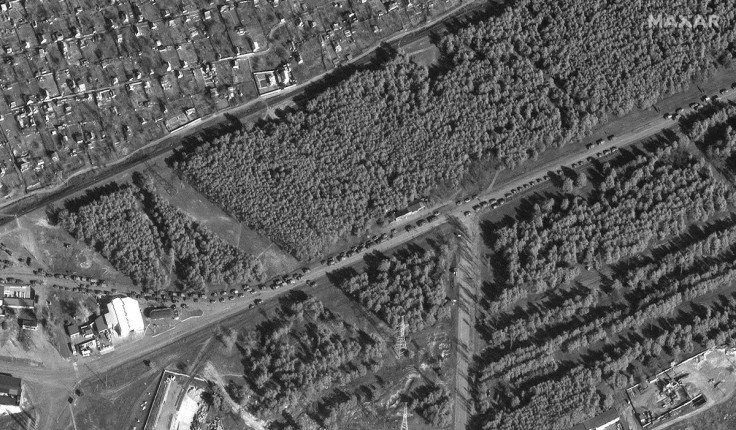Lack of Eyes In The Sky Hobbled Russian Troops In Ukraine, Says Report
KEY POINTS
- Inadequate satellites with high-quality capabilities ail Russia
- Kyiv benefitted from high-quality, real-time satellite imagery
- Russia's "Persona" satellite isn't as good as America's "Keyhole"
As the Ukrainian invasion reaches Day 47, Russia is said to have suffered a huge loss, in terms of both military equipment and men. The war, clearly, has not gone as Kremlin expected.
Besides flaws in interoperability and communication, experts attribute this failure to inadequate satellites with high-quality capabilities, according to Radio Free Europe/Radio Liberty. The report, quoting open-source information, maintains that Russia has been weighed down by its "small and inadequate fleet" of communications and surveillance satellites, forcing Kremlin to depend on either outdated technology or imported parts that are now harder to come by due to Western sanctions.
This is when Ukraine has been gaining from an unprecedented amount of intelligence, including real-time data on Russian troop movements. Though it is not clear if this includes high-resolution imagery from spy satellites, Kyiv benefitted from high-quality, real-time satellite imagery.
"In principle, Russia is already practically blind in orbit," Bart Hendrix, a Brussels-based analyst and expert on Soviet and Russian space programs, told Radio Free Europe/Radio Liberty.
He added that Russia currently has two optical reconnaissance satellites in orbit now, called Persona but they were launched between seven and nine years ago, which means they are nearing the end of their working life. "Adding further to the problem: The maximum resolution of the Persona satellites is believed to be 50 centimeters per pixel," Hendrix said.
At the same time, the U.S. spy satellites, called Keyhole, have an estimated resolution of around 5 centimeters per pixel. At that resolution, even the letter "V" painted on the roofs of Russian military vehicles in Ukraine would be clearly visible from the typical altitude where a spy satellite was orbiting, the report added.
"The Americans have at least five Keyhole-12 satellites, the Italians, the French and the Spaniards have their own satellites, there is an order of magnitude more," Hendrix added.
Besides, Russia also failed in developing remote-sensing satellites whose radars can see through cloud cover, unlike optical satellites. Russia has only one such radar satellite, called Kondor, launched in 2014. With its expected lifespan of five years, Kondor is already out of operation by now.
Though Russia's space forces launched Kosmos-2553 or Neutron, there is not much known about the satellite. "In terms of radar satellites, Russia also lags behind NATO by an order of magnitude," he said.
Not just that. Russia's bid to create its version of positioning technology - GPS is American government-owned and hence rejected by the Russians - has also hit a roadblock. Called GLONASS, this system is still not fully functional yet.
Moscow also lags in the data processing. "It’s one thing to have satellites, it’s another thing to be able to use them. You need a system that will allow you to quickly transfer information from satellites to the right people who will process it and transfer it to people responsible, for example, for target designation,” Pavel Podvig, an expert on Russian armed forces and a senior fellow at the UN Institute for Disarmament Research in Geneva, told the news outlet.

© Copyright IBTimes 2024. All rights reserved.











